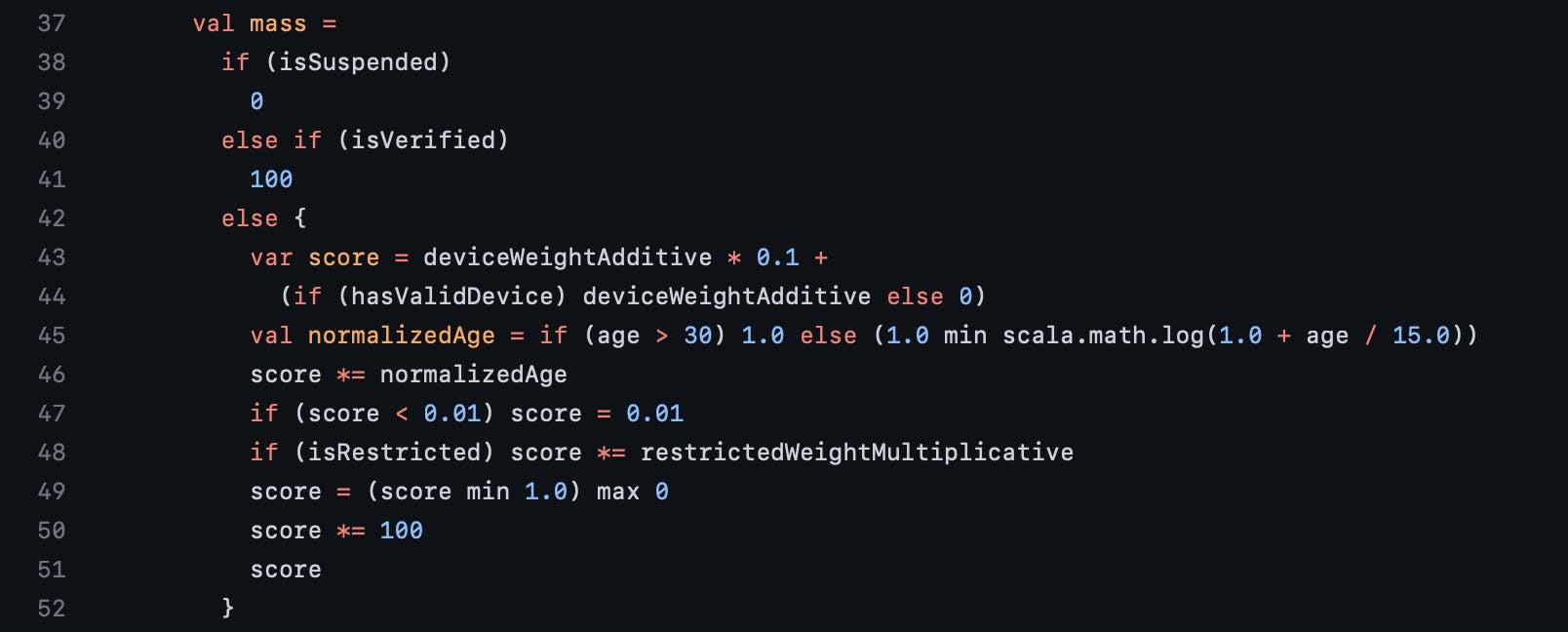The release of Twitter's algorithm allows us to explore the source code and gain insight into the reasons behind various occurrences on the platform, particularly the lack of promotion of good content.
Although the code for Twitter's algorithm is written in Scala and may be difficult to comprehend without a technical background, I am here to simplify it for you. Today, we will focus on "authority," which is a metric that measures the importance of a Twitter account. Twitter refers to this metric as "page rank," a term derived from Google's website ranking system, although this name can be confusing.
As we can read on the release notes:
Tweepcred is a social network analysis tool that calculates the influence of Twitter users based on their interactions with other users. The tool uses the PageRank algorithm to rank users based on their influence.
The tool consists of several files, including the Reputation and UserMass files that contain algorithms for computing authority.
These ranks are probably used elsewhere as a contributing factor in determining the audience reach for tweets from a particular account, a topic I'll delve into in future articles. For now, let's focus on the authority components found in the UserMass file.
Here is the first part of the calculation:

As you can see suspended account gets a 0 mass. Verified = 100.
Calculating authority for an account that is both unverified and suspended is a more intricate process, factoring in variables such as device validation, the account's age, and any restrictions on the account.
As a result, a value between 0 and 100 is calculated.
While the concept of a "verified device" remains unclear, it is noteworthy that the age of the account only holds significance up to 30 days. An account that is 10 years old carries the same weight as one that is only 30 days old in terms of its age-based value.
The code's function in this particular section is limited to what has already been described. However, there is a second part that builds on the value obtained from the previous section.
It means that even if an account is verified, its mass is adjusted:

This code verifies whether an account is following over 500 people and adjusts its mass accordingly if that condition is met.
In summary, based on the findings we have uncovered about authority so far:
The highest level of authority is granted to verified accounts.
Unverified accounts are ranked according to their age and device verification status.
An unverified account that is 30 days old is just as authoritative as one that is 10 years old.
All accounts, including verified ones, are penalized for maintaining a balanced number of followers and followings (mutual connections).
Having at least two followers on one person you follow results in the maximum mass and authority rank.
Account mass is unaffected by follower-to-following ratios until the number of people followed exceeds 500.

